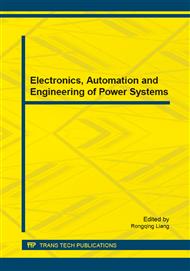p.109
p.113
p.118
p.125
p.131
p.138
p.147
p.153
p.157
A High Torque Magnetorheological Brake for Gait Rehabilitation Robot
Abstract:
A new structure magnetorheological brake (MR brake) with three effective areas was designed, two end surfaces and the cylindrical surface of the rotor work as effective areas, then the effective area was increased with the same volume of the rotor. Finite element model of the MR brake was built, the electromagnetic field analysis was performed, then magnetic field quantities of the damper model were got. With the results of the magnetic analysis and the relation between the yield stress and the magnetic field strength of the magnetorheological fluid (MR fluid), the performance simulation of the magnetorheological damper was realized. According to the requirements of the gait rehabilitation robot to the yield torque of the MR brake, the current driver was designed. On these bases, the mechanical performance test system of the MR brake were developed, the mechanical performance of the brake was researched used the test system, the brake’s properties: torque vs. speed and yield torque vs. current were obtained.
Info:
Periodical:
Pages:
131-137
Citation:
Online since:
February 2015
Authors:
Price:
Сopyright:
© 2015 Trans Tech Publications Ltd. All Rights Reserved
Share:
Citation:


